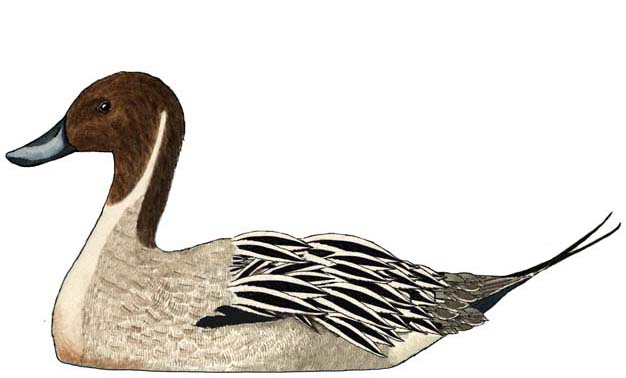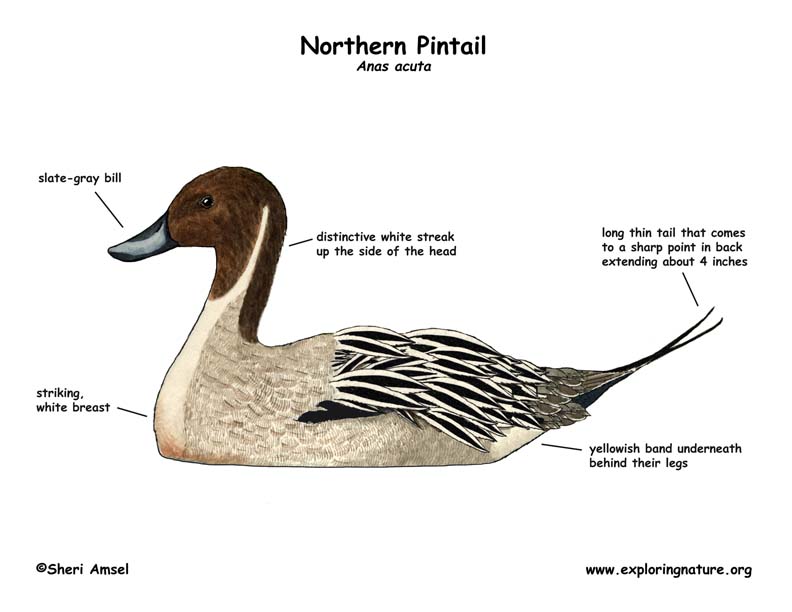

They are found throughout the world - breeding in the Northern Hemisphere and wintering in the Southern Hemisphere. In North America, they breed in Canada, Alaska and the northern U.S. and winter across the southern U.S., along the coasts and south through Mexico all the way to northern South America.
They live in wetlands – lakes, ponds, rivers, marshes and wet fields.
Males are slightly larger and more distinctly marked than than females which are dull grayish-brown (sexual dimorphism). Males have a dark head and a striking, white breast that continues up into a distinctive white streak up the side of the head. They have a long neck and slate-gray bill. The body is dark on top, gray on the sides and has a yellowish band underneath behind their legs. Another distinctive feature is a long thin tail that comes to a sharp point in back extending about 4 inches - the pin tail.
Pintails up end to feed by submerging the front half of their body and leaving just the tail above water. They are often seen feeding in small groups with many other species.
They eat invertebrates - snails, water insects and plant matter. They will take advantage of grain fields if available.
Females lay up to 9 cream-colored eggs and incubate them for 3 to 3.5 weeks. Then she'll bring the hatchling to water and teach them to forage for dead insects. The females stay with her brood for about 7 weeks.
Kingdom: Animalia
Phylum: Chordata
Class: Aves
Order: Anseriformes
Family: Anatidae
Subfamily: Anatinae
Genus: Anas
Species: A. acuta
When you research information you must cite the reference. Citing for websites is different from citing from books, magazines and periodicals. The style of citing shown here is from the MLA Style Citations (Modern Language Association).
When citing a WEBSITE the general format is as follows.
Author Last Name, First Name(s). "Title: Subtitle of Part of Web Page, if appropriate." Title: Subtitle: Section of Page if appropriate. Sponsoring/Publishing Agency, If Given. Additional significant descriptive information. Date of Electronic Publication or other Date, such as Last Updated. Day Month Year of access < URL >.
Amsel, Sheri. "Duck (Northern Pintail)" Exploring Nature Educational Resource ©2005-2024. December 13, 2024
< http://exploringnature.org/db/view/243 >

